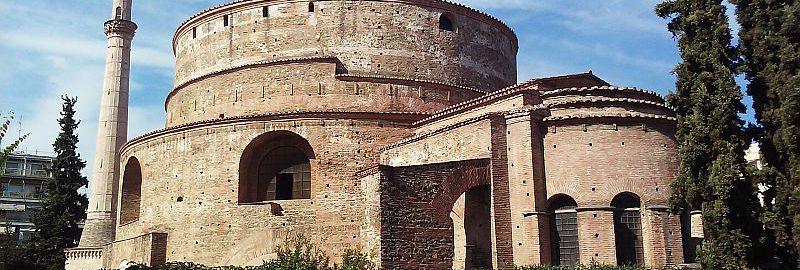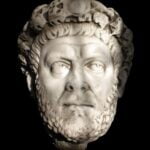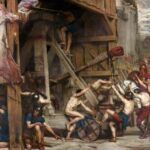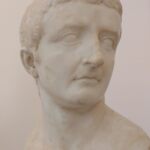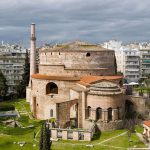At the turn of the 3rd and 4th centuries, around 298-304 CE, at the behest of the Emperor of Galerius, an impressive rotunda, evidently modeled on the Roman Pantheon, was erected in the eastern part of Thessaloniki.
The building had a plan of a circle with a diameter of 24,5 and a height of almost 30 meters. Like its prototype, it was covered with a dome with opaion, a hole in the vault. Although it was later walled up, its existence is confirmed by the opening for rainwater in the floor. The interior of Rotunda was just one spacious room, surrounded by six evenly spaced, spacious niches covered with barrel vaults. Above them there were large arched windows illuminating the interior – a serious innovation in relation to the windowless Pantheon. The second was the construction of the building, including the dome, entirely of brick.
The biggest riddle concerning Rotunda is its original function, which is still the subject of disputes among researchers. Some say it was built as the throne room of Galerius. This would be confirmed by its combination of a monumental road with a nearby palace complex. The problem is that the building was apparently erected a few years before the construction of the complex itself and was incorporated into it later, and a throne room was discovered there. Octagon.
The second considered function is the temple of Jupiter – the patron of the emperor. Here the biggest problem is that in the entire Roman world there was no other temple except the Pantheon, which is unique in itself. All the temples on the plan of the district had a circular colonnade (like the temple of Vesta on the Roman Forum). However, the argument of the greater importance seems to be the presence of windows in the cell – it is a solution unheard of anywhere else.
The last proposed interpretation is the mausoleum of Galerius, but he was buried in a monumental tomb erected in the palace, which he ordered himself to build in the place of birth named Felix Romuliana, in honor of the emperor’s mother (today’s Gamizgrad in Serbia). Galerius died on the way to Romuliana, but geographical proximity is not a sufficient argument to bury him there. The corpses of the emperors were carried many times, so if he wanted to be buried in Thessaloniki, there were no obstacles. In addition, burial of the dead within the city walls was legally and customarily prohibited, building a intramuros mausoleum is therefore unlikely. This interpretation can not be proved either. Apparently the original function of Rotunda will remain in the sphere of guesses. Today it serves as a church, and its interior is decorated with unique early Byzantine mosaics.

